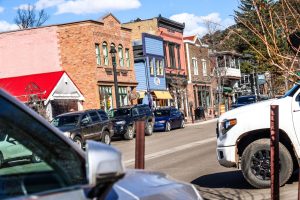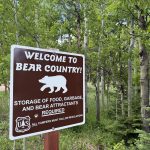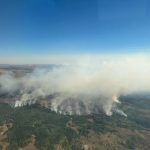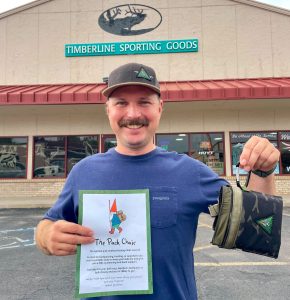How to prevent conflict with hungry bears as they pack on the calories for winter
Bear activity increases in the fall as the animals spend around 20 hours a day searching for food

Ali Longwell/The Post Independent
As the days shorten, temperatures drop and trees start to change color, Colorado’s black bear population is packing in the calories for winter.
Each fall, bears start to ramp up their daily caloric intake, seeking around 20,000 calories a day to build up enough fat reserves to survive winter, according to Colorado Parks and Wildlife. This is equivalent to a fast food order consisting of 20 chicken sandwiches, 10 large orders of French fries, 10 soft drinks and 10 milkshakes.
For bears, the search for these calories sends them searching for food for around 20 hours a day — and, oftentimes, toward more human food sources.
Black bears typically eat berries, fruits, nuts, plants and grasses. However, when these natural sources become more scarce — be it the time of year or widespread food failure — bears will overcome their fear of humans in search of food, Parks and Wildlife reports.
Colorado saw a record-high number of bear reports last year. While bear activity ramps up during the summer months and peaks in July and August when natural food sources are most abundant, nearly half of all 2024 reports occurred in August, September and October as the animals prepared for winter.
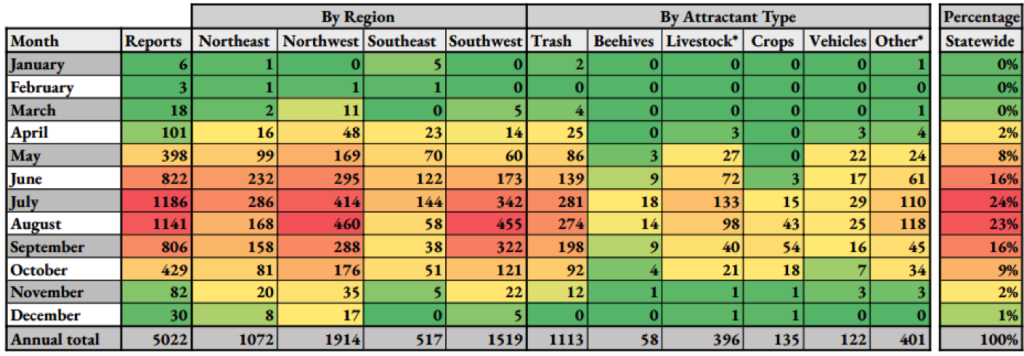
Regardless of the time of year, the vast majority of bear conflicts in Colorado are related to trash as well as other human food attractants including bird seed, pet food, barbecue grills and more.
Bears habituating to these human food sources can lead to unfortunate outcomes for the animals, including hazing, relocation or death. In 2024, Parks and Wildlife relocated 68 bears and euthanized 98, reporting that euthanization is most often traced back to human behavior.
In order to help prevent these types of conflicts and prevent bears from habituating to food sources like trash, bird feeders and more, Parks and Wildlife has several tips for homes. This includes:
- Never feed or approach bears, as it can lead bears to approach humans and homes for food more often
- Secure food, garbage and recycling (While securing containers inside is best, using wildlife-resistant containers when bins must be outdoors is also a good practice, and increasingly required in mountain communities.)
- Remove bird feeders during periods when bears are active
- Never leave pet food outdoors and feed pets indoors when possible
- Clean and store grills in a secure area
- Alert neighbors to bear activity
When recreating outdoors, the wildlife agency also recommends the following:
- Staying alert and with others when possible
- Leaving no food scraps and/or trash outdoors
- Keeping dogs leashed
- Camping safely, including setting up camp away from bears’ natural food sources and habitat, as well as cooking far away from tents and storing food, trash, and clothes worn while cooking in a secure location such as a vehicle or 10 feet off the ground and away from trees
- Carrying bear spray
According to Parks and Wildlife, if you do see a bear, don’t approach it. If it sees you, stand still and quietly move away. If the bear sees you, back away slowly and don’t run, as that can trigger a chase response. If the bear begins to approach you, hold your ground, wave your arms and make noise until it leaves. If it continues to approach, use bear spray. And if a black bear does make contact, fight back aggressively.
Basalt seeks input on historic downtown design guideline project
The town of Basalt is currently seeking public input on the creation of historic design guidelines, intended to preserve downtown’s “unique historic character and community identity,” along Midland Avenue.

Support Local Journalism

Support Local Journalism
Readers around Glenwood Springs and Garfield County make the Post Independent’s work possible. Your financial contribution supports our efforts to deliver quality, locally relevant journalism.
Now more than ever, your support is critical to help us keep our community informed about the evolving coronavirus pandemic and the impact it is having locally. Every contribution, however large or small, will make a difference.
Each donation will be used exclusively for the development and creation of increased news coverage.

